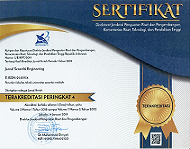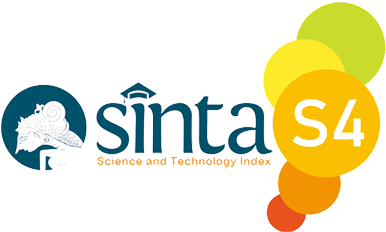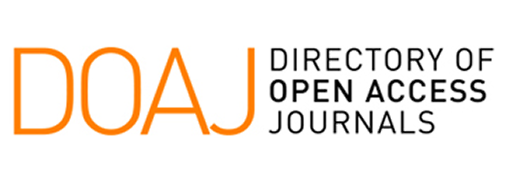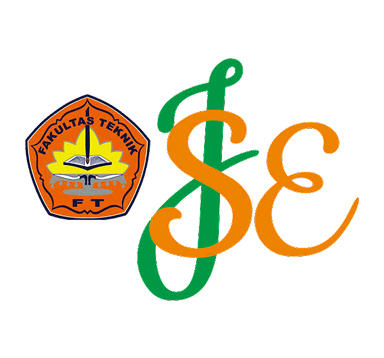Analisis Keberlanjutan Sistem Penyediaan Air Minum Berbasis Masyarakat pada Program PAMSIMAS di Kecamatan Tanjungsari, Kabupaten Sumedang
Keywords:
PAMSIMAS, Analisis Indikator, Keberlanjutan, CFA, SWOTAbstract
One of the targets of the Sustainable Development Goals (SDGs) 2030 is universal access to drinking water, particularly in rural areas that are vulnerable to crises due to population growth and increasing water demand. The Community-Based Drinking Water and Sanitation Program (PAMSIMAS) is one of the government’s efforts to expand water access in rural areas; however, its implementation has not yet functioned optimally. This study aims to identify the factors influencing the sustainability of the PAMSIMAS Program using the Confirmatory Factor Analysis (CFA) method and to formulate sustainable strategies through the Strengths, Weaknesses, Opportunities, and Threats (SWOT) approach. The research was conducted in five PAMSIMAS locations in Tanjungsari Subdistrict, Sumedang Regency. Data were collected through observation, interviews, and questionnaires. The results show that the financial aspect is the most influential from the users’ perspective, while the institutional aspect is the most influential from the managers’ perspective. Factor loading values ranged from 0.578 to 0.923, with key factors affecting sustainability from the users’ side including ability to pay, trust in management, financial regulation, water quantity, and environmental conditions, while from the managers’ side including water source availability, performance reporting, payment regularity, and water source protection. The SWOT analysis indicates that four locations require aggressive strategies (quadrant I), while one location requires a turn-around strategy (quadrant III).
References
[1] Laurence, Boisson, de, Chazournes., Mara, Tignino., Haoua, Savadogo. (2023). The Right to Water. 196-218. doi: 10.1093/oso/9780192872906.003.0009
[2] Gris, B. van ijk, C. Mukherjee. N. (2001).Linking sustainability with demand, gender, and proverity: a study in comminity managed water supply projects in 15 countries. Washington DC: World Bank Water and Sanitation Program.
[3] Hasbi, M. T., Bangun, E. P., & Mulia, A. P. (2025). Analisis Keberlanjutan Program Pamsimas Menggunakan Metode AHP: Studi Kasus di Desa Binjai Baru, Kabupaten Batu Bara. Journal of Syntax Literate, 10(8).
[4] Perusahaan Umum Daerah Air Minum Tirta Medal, "Laporan Tahunan 2024," Kabupaten Sumedang, 2024.
[5] Badan Pusat Statistik Kabupaten Sumedang, "Kecamatan Tanjungsari dalam Angka 2024," BPS Kabupaten Sumedang, Sumedang, 2024.
[6] Pemerintah Republik Indonesia, "Peraturan Pemerintah Republik Indonesia Nomor 122 Tahun 2015 tentang Sistem Penyediaan Air Minum (SPAM)," Lembaran Negara Republik Indonesia Tahun 2015 Nomor 310, Jakarta, 2015.
[7] Murtagh, F., & Heck, A. (2012). Multivariate data analysis (Vol. 131). Springer Science & Business Media.
[8] Daniel, D., Al Djono, T. P., & Iswarani, W. P. (2023). Factors related to the functionality of community-based rural water supply and sanitation program in Indonesia. Geography and Sustainability, 4(1), 29-38.
[9] Machali, I. (2021). Metode Penelitian Kuantitatif (3 ed.). Fakultas Ilmu Tarbiyah dan Keguruan UIN Sunan Kalijaga Yogyakarta.
[10] Krisdhianto, A., & Sembiring, E. (2016). Evaluasi Keberlanjutan Sistem Penyediaan Air Bersih Perdesaan di Kecamatan Ledokombo Kabupaten Jember Provinsi Jawa Timur. Jurnal Infrastruktur Air Bersih dan Sanitasi, Program Magister Pengelolaan Infrastruktur Air Bersih dan Sanitasi, Fakultas Teknik Sipil dan Lingkungan, ITB.
[11] Kementerian Kesehatan Republik Indonesia, "Peraturan Menteri Kesehatan Republik Indonesia Nomor 2 Tahun 2023 tentang Standar Kesehatan Lingkungan dan Kesehatan Air untuk Keperluan Higiene Sanitasi, Kolam Renang, Solus Per Aqua, dan Pemandian Umum," Jakarta, 2023.
[12] Republik Indonesia, Peraturan Presiden Nomor 18 Tahun 2020 tentang Rencana Pembangunan Jangka Menengah Nasional Tahun 2020–2024. Jakarta: Sekretariat Negara RI, 2020.
[13] Badan Pusat Statistik, Persentase rumah tangga yang memiliki akses terhadap sumber air minum layak menurut provinsi dan klasifikasi desa (persen). Jakarta: BPS, 2024. [daring]. Available: https://www.bps.go.id/id/statistics-table/2/ODU0IzI%3D/persentase-rumah-tangga-yang-memiliki-akses-terhadap-sumber-air-minum-layak-menurut-provinsi-dan-klasifikasi-desa--persen-.html. [Accessed: 27-Aug-2025].
[14] Natalia, A., Aryani, W. N., & Yudha, G. (2025). Strategic Readiness Of Partnership Between Government And Non-Profit Organizations In The Wash In HCF Program In Bandarlampung City. Jurnal Agregasi: Aksi Reformasi Government dalam Demokrasi, 13(1), 77-95.
[15] Mani, S., & Singh, S. (2016). Sustainable municipal solid waste management in India: A policy agenda. Procedia Environmental Sciences, 35, 150-157.
[16] Shi, D., Lee, T., & Maydeu-Olivares, A. (2019). Understanding the model size effect on SEM fit indices. Educational and psychological measurement, 79(2), 310-334.
[17] McNeish, D., An, J., & Hancock, G. R. (2018). The thorny relation between measurement quality and fit index cutoffs in latent variable models. Journal of personality assessment, 100(1), 43-52.
[18] Brown, T. A. (2015). Confirmatory factor analysis for applied research. Guilford publications.
[19] Merliana. (2019). Analisis Strategi Keberlanjutan Pemanfaatan Infrastruktur Sanimas dengan Metode Confirmatory Factor Analysis (CFA) dan SWOT. ITB: Bandung.
[20] Hair, J. F., Black, W. C., Babin, B. J., & Anderson, R. E. (2019). Multivariate data analysis (8th ed.). Cengage.
[21] Andriyanto, N., Suheri, A., & Soesanta, P. E. (2023b). Analysis of the sustainability status of community-based drinking water supply in Kapongan District, East Java. Indonesian Journal of Applied Environmental Studies, 4(2), 85–92. https://doi.org/10.33751/injast.v4i2.8976ed.). Cengage.
[22] Roekmi, R. A. K., Baskaran, K., & Lloyd, H. C. C. (2018). Community-based water supplies in Cikarang, Indonesia: Are they sustainable? Natural Resources Forum, 42, 108–122. https://doi.org/10.1111/1477-8947.12146
[23] Lugiarti, E., Wiryaningsih, A., Nurmawati, I., Pratiwi, M., Juangga, S., & Yuliati, S. (2021). Buku Saku Keberlanjutan Pasmimas (1 ed.). Kementerian Desa Pembangunan Daerah Tertinggal dan Transmigrasi.
[24] Hakim, C. A. (2023). Analisis Keberlanjutan Sistem Penyediaan Air Minum dengan Multidimensional Scaling pada Desa Jatimukti, Jatinangor, Sumedang. Institut Teknologi Bandung.
[25] Toan, T. D., Hanh, D. N., & Thu, D. T. (2023). Management Models and the Sustainability of Rural Water Supply Systems: An Analytical Investigation in Ha Nam Province, Vietnam. Sustainability, 15(12), 9212. https://doi.org/10.3390/su15129212
[26] Maryati, S., Firman, T., & Humaira, A. N. S. (2022). A sustainability assessment of decentralized water supply systems in Bandung City, Indonesia. Utilities Policy, 76, 101373. https://doi.org/10.1016/j.jup.2022.101373
[27] Suharyanto, K Deasy, A., & Sudarno. (2018). Sustainable Community Based Water Supply at Salatiga by Use of Rapfish Method. MATEC Web of Conferences, 159. https://doi.org/10.1051/matecconf/201815901023
Downloads
Published
Issue
Section
License
Copyright (c) 2025 Regia Afiyanti Putri, Agus Jatnika Effendi (Author)

This work is licensed under a Creative Commons Attribution 4.0 International License.












